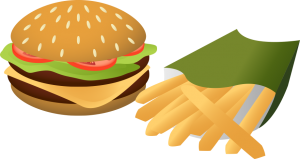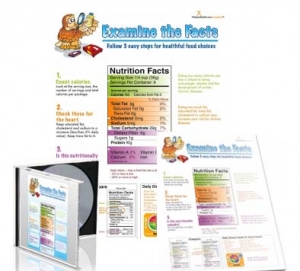Breaking News: FDA's Menu Labeling Calorie Labeling Rules
 It's here! It's here! It's finally here!The FDA has just released their final rule for calorie labeling on menus. Over 4 years ago, Congress called for menu labels that outline the nutrition content of restaurant and vending machine foods. Proposed rules missed key details and were subject to fervent lobbying, but the regulations are now official, and much more wide-ranging than the initial drafts.So, what's changed?According to the press release, "The U.S. Food and Drug Administration today finalized two rules requiring that calorie information be listed on menus and menu boards in chain restaurants, similar retail food establishments and vending machines with 20 or more locations to provide consumers with more nutritional information about the foods they eat outside of the home."In other words, there are now rules in place about nutrition information being available at many different restaurants (and vending machines too!).The places that sell food and are under the new regulations must "clearly and conspicuously" display calorie information about the foods and do so near the prices. Seasonal treats and daily specials are not subject to this regulation. These regulations will go into effect in one year or on November 25, 2015.The second part of these regulations has to do with detailed nutrition information. Though calorie information must be posted, the rest of the Nutrition Facts are not left out of the loop. Instead, calories from fat, total fat, saturated fat, trans fat, total carbohydrates, total calories, as well as levels of cholesterol, sodium, fiber, sugars, and protein will all have to be made available in writing if a customer asks for them.Further, according to FoodPolitics.com, "To help consumers understand the significance of the calorie information in the context of a total daily diet, under the rule, menus and menu boards will include the statement: '2,000 calories a day is used for general nutrition advice, but calorie needs vary.'"The goal of these regulations is to "fill a critical information gap and help consumers make informed and healthful dietary choices" (source).So, what stores do these new regulations apply to? The FDA asserts that places to be regulated in this way must "(1) be part of a chain of 20 or more locations, (2) doing business under the same name, (3) offering for sale substantially the same menu items." The list includes...
It's here! It's here! It's finally here!The FDA has just released their final rule for calorie labeling on menus. Over 4 years ago, Congress called for menu labels that outline the nutrition content of restaurant and vending machine foods. Proposed rules missed key details and were subject to fervent lobbying, but the regulations are now official, and much more wide-ranging than the initial drafts.So, what's changed?According to the press release, "The U.S. Food and Drug Administration today finalized two rules requiring that calorie information be listed on menus and menu boards in chain restaurants, similar retail food establishments and vending machines with 20 or more locations to provide consumers with more nutritional information about the foods they eat outside of the home."In other words, there are now rules in place about nutrition information being available at many different restaurants (and vending machines too!).The places that sell food and are under the new regulations must "clearly and conspicuously" display calorie information about the foods and do so near the prices. Seasonal treats and daily specials are not subject to this regulation. These regulations will go into effect in one year or on November 25, 2015.The second part of these regulations has to do with detailed nutrition information. Though calorie information must be posted, the rest of the Nutrition Facts are not left out of the loop. Instead, calories from fat, total fat, saturated fat, trans fat, total carbohydrates, total calories, as well as levels of cholesterol, sodium, fiber, sugars, and protein will all have to be made available in writing if a customer asks for them.Further, according to FoodPolitics.com, "To help consumers understand the significance of the calorie information in the context of a total daily diet, under the rule, menus and menu boards will include the statement: '2,000 calories a day is used for general nutrition advice, but calorie needs vary.'"The goal of these regulations is to "fill a critical information gap and help consumers make informed and healthful dietary choices" (source).So, what stores do these new regulations apply to? The FDA asserts that places to be regulated in this way must "(1) be part of a chain of 20 or more locations, (2) doing business under the same name, (3) offering for sale substantially the same menu items." The list includes...
- Amusement Parks
- Bakery and Coffee Shop Treats
- Certain Alcoholic Beverages
- Drive-Thrus
- Foods Ordered from a Menu Board at Grocery Stores
- Foods Prepared On Site at Convenience Stores and Gas Stations
- Foods Prepared On Site at Warehouse Stores
- Hot Food Bars
- Movie Theaters
- Restaurants
- Salad Bars
- Take-Out Food
- Treats for Immediate Consumption at Ice Cream Stores
The press release also states "The vending machine final rule requires operators who own or operate 20 or more vending machines to disclose calorie information for food sold from vending machines, subject to certain exceptions. Vending machine operators will have two years to comply with the requirements."What does this mean for consumers?Well, for one thing, once this information is in place, it is possible that people will consume fewer calories when dining out. According to a study from the Stanford Graduate School of Business, "when restaurants post calories on menu boards, there is a reduction in calories per transaction." In other words, people ordered fewer calories when they saw how many calories each menu item contained.Though these regulations will not be enforced for a year or so (to give the companies time to comply), there are 5 things that consumers can do in order to make this information as useful as possible.
- When reading calories, keep in mind that most meals should be around 400 to 500 calories. This allows for 3 meals plus 1-2 snacks per day on 2000 calories.
- Remember to include beverage calories in your count. Consider choosing water, diet, or unsweetened tea to ensure that the beverage calories stay around 0.
- If someone is on a special diet and needs to know saturated fat, carbohydrate, or sodium information, encourage them to ask for it. The operators are required to give that information to you upon request.
- Calorie counts will appear next to pricing on menus and menu boards.
- Using MyPlate to make a healthy plate will ensure that most meals are not too high in calories. This guideline is great to use when calorie counts are not supplied.
Want to know more? There are tons of resources out there already. Here's where to start.
- FDA Labeling Requirements Overview
- FDA Menu Labeling Fact Sheet
- FDA New Guideline Press Release
- Menu and Vending Machines Labeling Requirements
Want some resources to help your clients learn about calories and dining out? Here you go!


